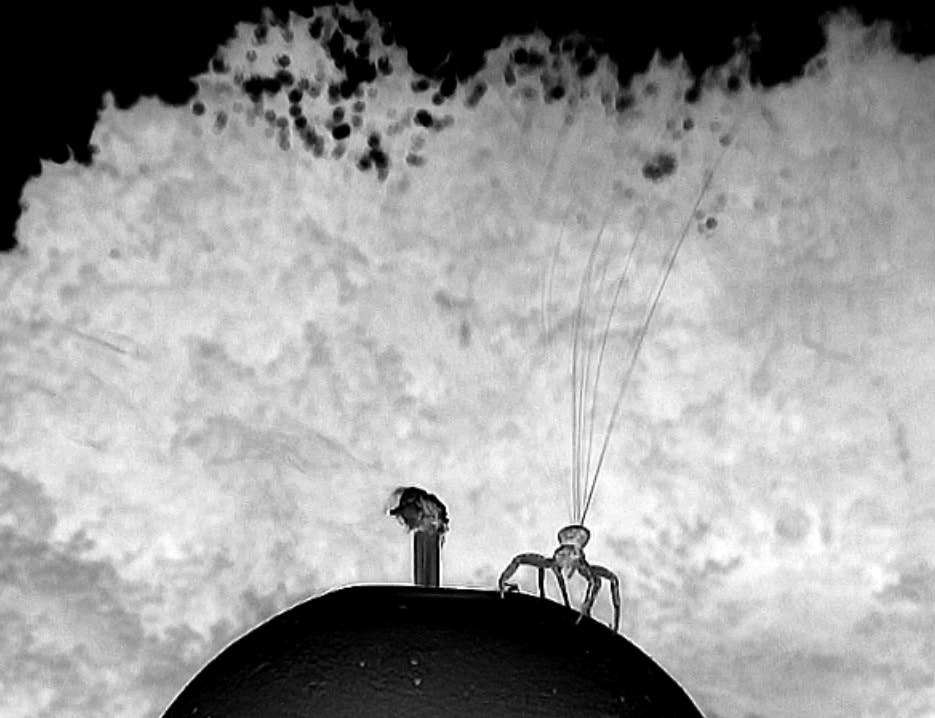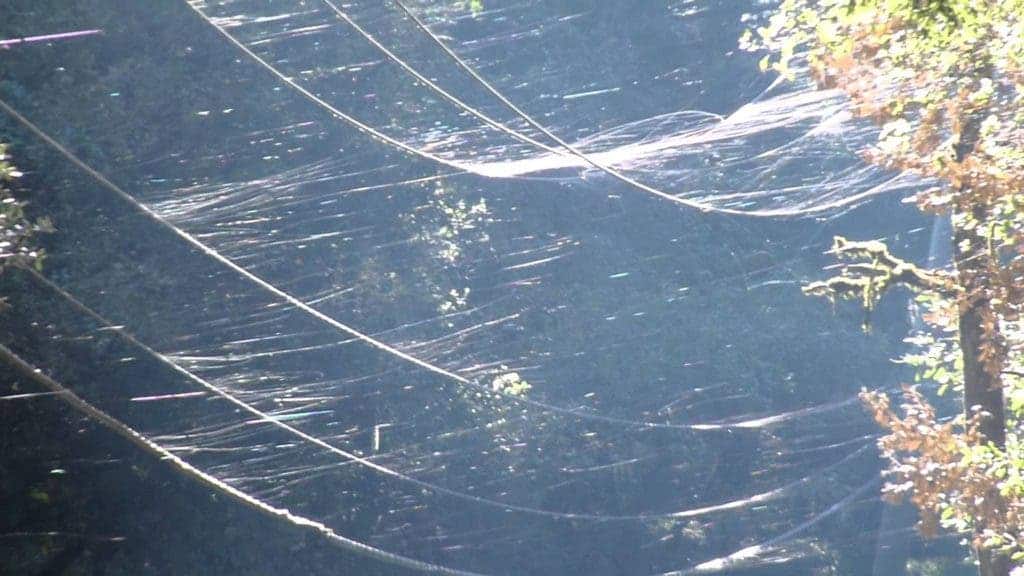The technique, called ballooning, allows spiders to travel on the wind for hundreds of kilometers.

Most animals walk, swim or fly if they want to get somewhere. But if you’re a tiny landlocked spider and want to get far away, it can be quite problematic. Instead, many spiders have developed a new technique: they hitch a ride using the wind. Many spiders engage in ballooning to disperse from their birth site, to search for food or mates, or simply to colonize other areas. Although this behavior has previously been studied on several occasions, it’s the first time researchers have actually measured how spiders use fibers to balloon.
[panel style=”panel-default” title=”Spider balloons” footer=””]Through a process called ballooning, spiders (and other small invertebrates) move through the air by releasing one or more gossamer threads to catch the wind, causing them to become airborne. The spider climbs to a high point and takes a stance with its abdomen to the sky, releasing fine silk threads from its spinneret until it becomes aloft.
It’s a very effective technique for traveling great distances, but the spiders are ultimately at the mercy of the winds. Ballooning is very dangerous, and many spiders don’t survive the adventure — yet many species still practice it, and some even partake in mass spider ballooning.[[/panel]
Using a combination of field observations and wind tunnel experiments, researchers found that large crab spiders (Xysticus species), which measure about 5 mm long and weigh up to 25 milligrams, can sense the weather patterns and adjust accordingly. The spiders actively evaluated wind conditions by raising one or both of their front legs and then orienting themselves in the direction of the wind.

When winds are below 3 m/sec (7 mph) and have relatively light updrafts, the spiders spun out multiple ballooning silks averaging 3 meters long. They would hitch a ride and ultimately release themselves from a separate silk line anchored to a blade of grass. A single spider can release up to 60 nanofibers, most of them as thin as 200 nanometers.
It’s impressive that the spiders first evaluate the weather, and only then launch themselves.
“The pre-flight behaviors we observed suggest that crab spiders are evaluating meteorological conditions before their takeoff,” Cho said. “Ballooning is likely not just a random launch into the wind, but one that occurs when conditions most favor a productive journey.”
Journal Reference: Citation: Cho M, Neubauer P, Fahrenson C, Rechenberg I (2018) An observational study of ballooning in large spiders: Nanoscale multifibers enable large spiders’ soaring flight. PLoS Biol 16(6): e2004405. https://doi.org/10.1371/journal.pbio.2004405


